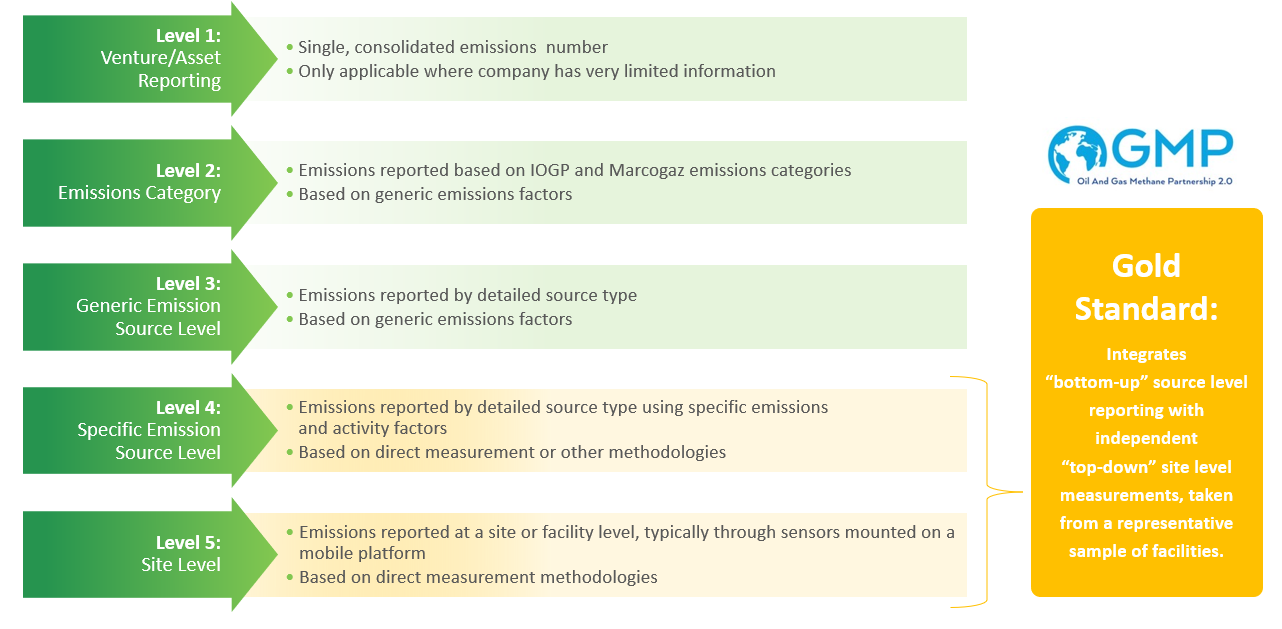
OGMP 2.0:
The What and the Why
March 29, 2024
In late 2023, COP28 brought a lot of attention to methane, including the announcement of the U.S. Environmental Protection Agency’s final New Source Performance Standard (NSPS) Subparts OOOOb/OOOOc, designed to sharply reduce methane emissions from oil and gas operations. The Oil and Gas Methane Partnership (OGMP) 2.0 also announced several new members both during the event and in early 2024.
If those announcements had you wondering what OGMP 2.0 is all about, or if you’re familiar with the concept but not the details, then this is the blog for you! We welcome you to the first of our OGMP 2.0 blog series that will demystify OGMP 2.0, its benefits, and its requirements. You might be surprised – many companies are already meeting some of the OGMP 2.0 requirements but have not formally signed up for the program. Why miss out on this potentially valuable opportunity?
What is the Oil & Gas Methane Partnership 2.0?
OMGP 2.0 is the flagship oil and gas reporting and mitigation program of the United Nations Environment Programme (UNEP). It is the only comprehensive, measurement-based international reporting framework for the oil and gas sector. OGMP 2.0’s intent is to be inclusive, global, and focus on the measurement of one greenhouse gas – methane – which has a global warming potential 28 times that of carbon dioxide. The program requires that members replace inaccurate, generic emission factors with more accurate factors based on direct emissions measurement.
The goal of OGMP 2.0 is to drive deep methane reductions across the oil and gas industry over the next decade, guided by actionable emissions data, in a manner transparent to key stakeholders. OGMP 2.0 provides its members with access to a community of companies that is aligned in methane reduction efforts and works collaboratively to share experiences in measurement and mitigation of methane emissions. Becoming an OGMP 2.0 member company may be a logical next step, in particular if your company is already performing some the activities associated with the program.
Why should I join OGMP 2.0?
Committing to a program such as OGMP 2.0 shows the highest commitment to transparency and accurate measurement and reporting of actual methane emissions and emissions reduction. Achieving and maintaining OGMP 2.0 Gold Standard sets your company and your product apart, helping to maintain and grow market share through the low-carbon energy transition. While getting to a fully implemented OGMP 2.0 Gold Standard will take time to achieve, acting now will allow your company to capture and benefit from this opportunity and likely enhance your value proposition over competitors.
Upon joining OGMP 2.0, the real work begins to set methane reduction targets and develop implementation plans with the goal of achieving OGMP 2.0’s Gold Standard within three to five years.
What is OGMP 2.0’s Gold Standard?
The OGMP 2.0 program consists of five reporting levels as shown below:

Each company can start at any of the reporting levels based on its understanding of its methane emission sources and the methodology followed to quantify them. Note that U.S.-based oil and gas companies who report emissions to the U.S. Environmental Protection Agency (EPA) in accordance with the Greenhouse Gas Mandatory Reporting Rule (GHG MRR) Subpart W are generally reporting in accordance with Level 3 for most emission sources.
A key component of achieving Gold Standard is reporting actual methane emissions from all material sources – at both operated and non-operated assets – on an annual basis. Gold Standard reporting indicates that measurement-based, source-level emissions data are reconciled with independent, site-level measurements, confirming data integrity and completeness.
How can my company achieve Gold Standard?
Now that you understand OGMP 2.0 and its reporting levels, it may be useful to understand how a company can effectively achieve Gold Standard. The following graphic provides an overview of the necessary steps in this process.

It is important to note – although these are the general steps a company must take, your company may already be performing some of these activities in accordance with existing or emerging regulatory requirements or internal methane reduction programs.
What next?
Don’t miss our upcoming blogs in this series; our next blog will dive deeper into what makes an effective OGMP 2.0 Implementation Plan.
More importantly, please reach out to our experts with any questions you may have regarding OGMP 2.0. We’d love to listen to your challenges and help you approach this process in a fit-for-purpose manner that provides value for you and your stakeholders!
We deliver a comprehensive suite of advanced environmental services, including sophisticated on-site detection and measurement technologies, expert strategic advisory services, and comprehensive data management platforms, as well as critical support in permitting, regulatory compliance, and emergency readiness and response. We can partner with you to help you accurately measure your methane emissions, achieve your emissions reduction goals, and receive recognition for your efforts via a natural gas certification program such as OGMP 2.0, and our international presence means that no place on the globe is out of reach.




